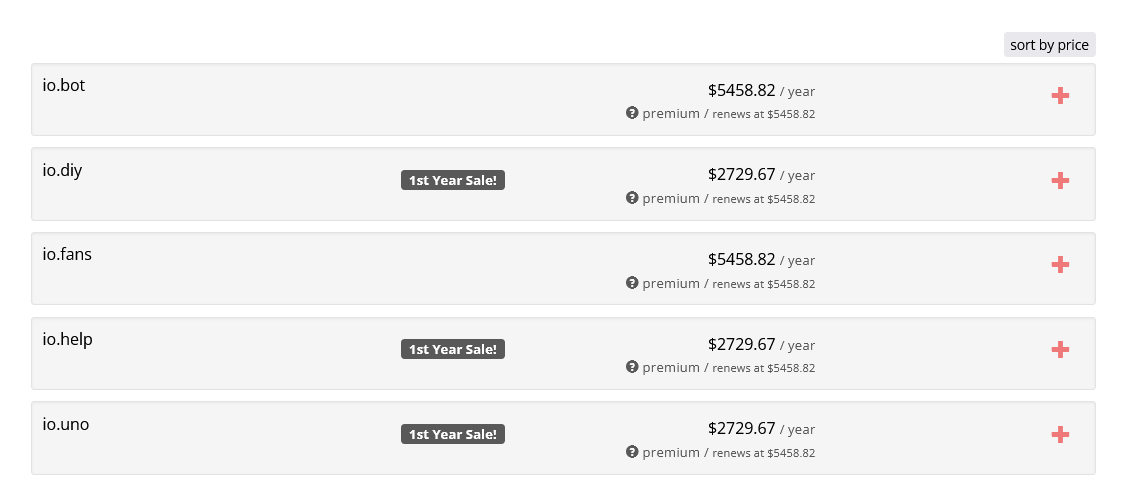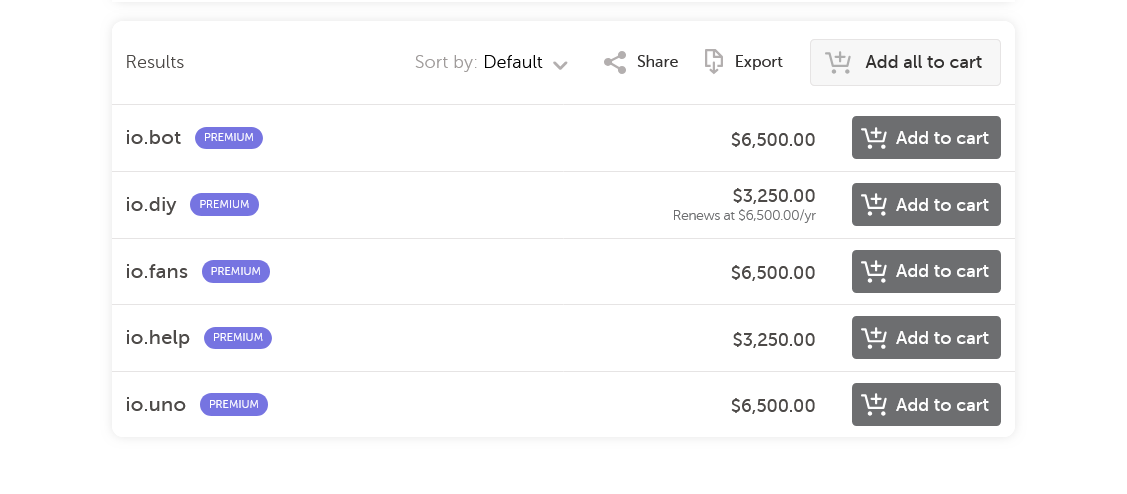Distorted Market
TLDR
- Premium domain registrants waive the protections needed for a healthy market.
- Premium domains exist at the expense of standard domains.
- Registry ownership is vulnerable to consolidation which reduces competition.
- The market for registry premium domains is vulnerable to cooperative competition.
- Some registries have several subsidiaries.
- Domains with premium renewal prices do not benefit registrants and should never have been allowed.
Overview
The trend towards registry premium domains has allowed registrants to opt in to a distorted market.
Registry Premium Domains Only
The premium domains described on this page are registry premium domains on gTLDs.
Waived Protections
Standard domains have protections that create a healthy market. Those protections, specifically the requirement for uniform renewal pricing, are explicitly waived by registrants of registry premium domains. Registrants that give up those protections are opting in to a distorted market.
Domain Inventory
Registry premium domains are the same as standard domains, but are tagged with a non-standard fee class that indicates the registry has placed a higher value on them. A domain can be standard or non-standard, not both, so every registry premium domain that exists results in one less standard domain available to registrants.
Registry Consolidation
The best example of registry and, in turn, supply consolidation can be found on Wikipedia.
Domain Consolidation (Emphasis Added)
Cooperative Competition
Registry premium domains carry the risk of exposing registrants to cooperative competition among registries. This can occur through many legal means such as market signaling or if multiple participants use the same vendor for pricing data. For registrants, this can result in identical retail pricing for domains on TLDs that are managed by competing registries.
Disclaimer
Although registrars have some retail markup, it is the registries that set pricing for premium domains. Although not provable without confirmation from a registrar, the wholesale registry pricing is likely identical for these domains.
Note the estimated renewal price for each domain.
ICANN lists the registry operators (archived) for these TLDs as follows:
.bot- Amazon Registry Services, Inc..diy- Lifestyle Domain Holdings, Inc. or Internet Naming Company LLC (archived)..fans- ZDNS International Limited.help- Innovation Service Limited.uno- Radix Technologies Inc SEZC
Porkbun Domain Search, July 11, 2025

Last verified on Sep 29, 2025
Namecheap Domain Search, July 11, 2025

The Namecheap domain search does not list an alternate renewal price for io.help, but an API query shows that it matches the others.
Namecheap API Query, July 11, 2025
<?xml version="1.0" encoding="utf-8"?>
<ApiResponse Status="OK" xmlns="http://api.namecheap.com/xml.response">
<Errors />
<Warnings />
<RequestedCommand>namecheap.domains.check</RequestedCommand>
<CommandResponse Type="namecheap.domains.check">
<DomainCheckResult Domain="io.help" Available="true" ErrorNo="0" Description="" IsPremiumName="true" PremiumRegistrationPrice="3250.0000" PremiumRenewalPrice="6500.0000" PremiumRestorePrice="39.0000" PremiumTransferPrice="6500.0000" IcannFee="0" EapFee="0.0" />
</CommandResponse>
<Server>Server 1360233661</Server>
<GMTTimeDifference>--4:00</GMTTimeDifference>
<ExecutionTime>0.284</ExecutionTime>
</ApiResponse>Subsidiaries
Having a single parent company operating several subsidiaries can make it difficult for registrants to understand how much registry consolidation has occurred in the industry. Some of this can be seen on ICANN’s list of registry operators (archived). For example:
Dog Beach, LLC
c/o Identity Digital Inc.Binky Moon, LLC
c/o Identity Digital Inc.No Registrant Benefit
Registry premium domains do not provide any benefit to registrants. Although aftermarket domains fetching significant sums of money may create the perception that higher renewal pricing will deter domain speculators, that is not the case. If there is a difference between the registration price offered by registries and the market value of a domain, speculators will figure it out and capture that value.
From a registrant’s perspective, premium renewal pricing inflates costs, eliminates price protections, and limits competition in the aftermarket. The aftermarket will continue to capture the excess value for high-quality, underpriced domains while domains deemed low-value by the aftermarket may still be classified as registry premium domains for normal registrants, thus increasing the average price for consumers.
Registries can restrict the supply of domains offered at fair value by putting an ever-increasing number of domains into non-standard, aka registry premium, fee classes which, in turn, forces registrants to opt in to the distorted market described above if they want to register a high-quality domain.
This transforms the nature of the investment for a registrant. A high-value aftermarket domain can be considered a resellable asset with low, predictable carrying costs. In contrast, a registry premium domain becomes a long-term liability with higher, and potentially unpredictable, renewal fees, creating financial risk for any business built upon it.